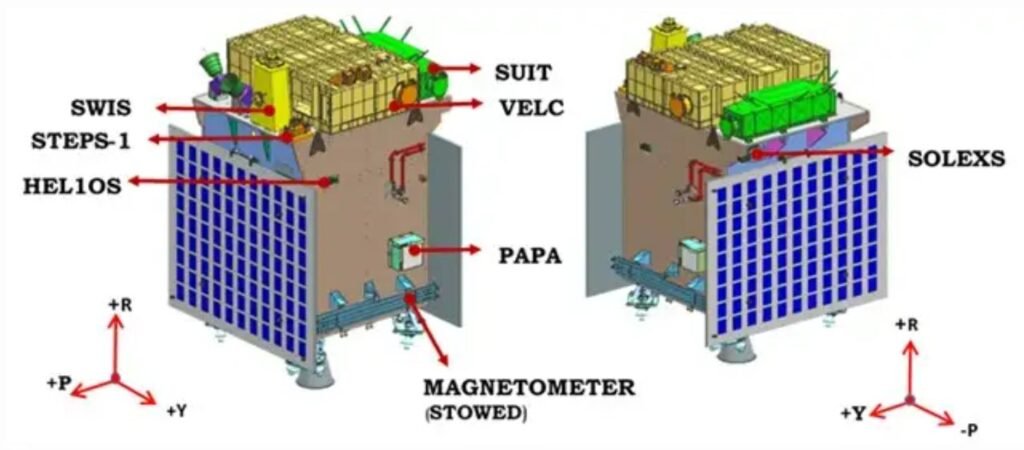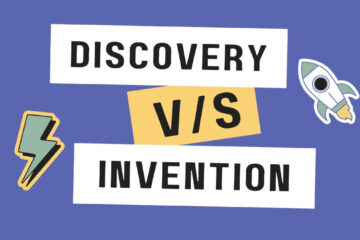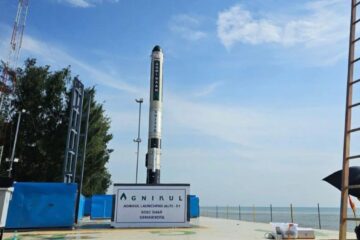Aditya-L1 mission was launched on September 2, 2023, at 11:50 am from the Sriharikota spaceport. Aditya-L1 Solar Mission is India’s ambitious solar mission led by ISRO. In this article, we will know all the details of Aditya L1, its mission objectives, launch date and time, and its significance for UPSC aspirants. We’ll also explore the Aditya L1 budget, launch vehicle, and the manufacturers behind this groundbreaking satellite. Join us as we uncover the intricacies of Aditya L1, the first Indian mission dedicated to the study of the Sun, and gain insights into ISRO’s remarkable endeavour in solar research.
| Aditya-L1 Mission type | Solar observation |
| Aditya-L1 Operator | ISRO |
| Aditya-L1 Mission duration | 5.2 years (planned) |
| Aditya-L1 Manufacturer | ISRO / IUCAA / IIA |
| Aditya-L1 Launch mass | 1,475 kg (3,252 lb) |
| Aditya-L1 Payload mass | 244 kg (538 lb)[1] |
| Aditya-L1 Launch date | 2 September 2023, 11:50 IST (06:20 UTC) (planned) |
| Aditya-L1 Rocket | PSLV-XL(C57) |
| Aditya-L1 Launch site | Satish Dhawan Space Centre |
| Aditya-L1 Contractor | Indian Space Research Organisation |
| Aditya-L1 Orbital parameters | Reference system: Sun-Earth L1 Regime: Halo orbit Period: 177.86 days |
| Aditya-L1 Instruments | Visible Emission Line Coronagraph (VELC) Solar Ultraviolet Imaging Telescope (SUIT) Aditya Solar wind Particle Experiment (ASPEX) Plasma Analyser Package for Aditya (PAPA) Solar Low Energy X-ray Spectrometer (SoLEXS) High Energy L1 Orbiting X-ray Spectrometer (HEL1OS) Magnetometer |
Attempt Aditya L1 Quiz.
Table of Contents
Aditya L1 Mission Launch Date and Time
The Aditya-L1 is India’s first solar mission. It was launched by the Polar Satellite Launch Vehicle (PSLV)-C57 rocket on September 2, 2023, at 11:50 AM IST (4:20 AM UTC). The launch will take place from the Satish Dhawan Space Centre in Sriharikota, Andhra Pradesh, India.
The Aditya-L1 is intended to be placed in a halo orbit around the Sun-Earth Lagrange Point 1 (L1). This is a point in space that is located about 1.5 million kilometres from Earth in the direction of the Sun. The Aditya-L1 will use this orbit to study the Sun’s atmosphere, solar magnetic storms, and their impact on the environment around Earth.
The Aditya-L1 carries seven payloads to study the Sun. Four of these payloads will observe the light from the Sun, and the remaining three will measure in-situ parameters of the plasma and magnetic fields. The data from these payloads will help scientists to better understand the Sun’s dynamics and its impact on Earth.
The launch of the Aditya-L1 is a major milestone for India’s space program. It is the first Indian mission dedicated to studying the Sun, and it will help to advance our understanding of this important star.
Know About Chandrayaan 3 Moon Mission.
Aditya L1 Mission Live Streaming
ISRO will be live streaming the Launch of the PSLV-C57/Aditya-L1 Mission from Satish Dhawan Space Centre (SDSC) SHAR, Sriharikota.
Aditya L1 Full Form
Aditya L1 stands for Aditya Lagrangian point 1. “Aditya” refers to the Sun in Hindu mythology, where it is considered as the source of energy and light. “L1” stands for Lagrangian point 1, which is a specific position in space where the spacecraft is planned to be positioned.
- The spacecraft is planned to be placed in a “halo orbit” around the Lagrangian point 1 (L1) of the Sun-Earth system.
- L1 is located approximately 1.5 million kilometres away from Earth.
- Placing a satellite in this specific orbit provides the significant advantage of continuously observing the Sun without any interruptions like occultation or eclipse. This continuous view enables better monitoring of solar activities.
Major Facts Related to Aditya L1 Mission
Why ISRO’s Aditya L1 Mission is the talk of the town?
- Aditya L1 Mission is set to use the more powerful ‘XL’ variant of the Polar Satellite Launch Vehicle (PSLV).
- The spacecraft is expected to be placed into orbit around the middle of January, with system testing scheduled to follow. Regular data collection is projected to begin by the end of February.
- Aditya-L1 will be positioned in a halo orbit around Lagrangian Point 1 (L1), approximately 1.5 million km from Earth in the direction of the Sun. This orbit allows continuous observation of the Sun.
- The mission carries a total of seven payloads, including instruments for studying the Sun’s light and in situ parameters of plasma and magnetic fields.
- The Visible Emission Line Coronagraph (VELC), the primary payload, is capable of sending 1,440 images per day to the ground station for analysis upon reaching its intended orbit.
- Aditya L1 is India’s maiden solar mission, designed to study the Sun.
- The liquid propulsion systems developed by ISRO will play a crucial role in propelling Aditya L1.
- The launch is scheduled for September 2, 2023, at 11:50 AM IST.
- Aditya L1 will be placed in a low Earth orbit initially, followed by an elliptical orbit before reaching Lagrangian Point 1 (L1).
- The total travel time from launch to L1 is expected to take about four months.
- Aditya-L1 will be positioned within a “halo orbit” around L1, located approximately 1.5 million km from Earth.
- This mission aims to unlock the mysteries of the Sun, including coronal heating, solar wind acceleration, and the dynamics of the solar atmosphere.
- The spacecraft carries seven advanced payloads to scrutinize various layers of the Sun.
- Several other countries, such as the United States, Japan, Europe, and China, have also launched solar missions to study the Sun.
- Studying the Sun is essential for understanding space weather, which can impact Earth’s satellites, power grids, and more. Solar observations provide crucial data for space weather predictions and understanding climatic changes on Earth.
Aditya-L1 Mission Objectives
The Aditya-L1 mission aims to provide valuable insights into the Sun’s behaviour, its impact on space weather, and the underlying physical processes governing its complex dynamics. This research is essential for understanding and predicting space weather events, which can significantly affect Earth and our technological infrastructure.
The primary scientific goals of the Aditya-L1 mission encompass several key areas of solar research:
- Investigation of the dynamic behaviours within the upper regions of the Sun’s atmosphere, including the chromosphere and corona.
- Exploration of the processes responsible for heating the chromosphere and corona, as well as the physics of partially ionized plasma, the triggering of coronal mass ejections (CMEs), and solar flares.
- Direct observation of the particle and plasma conditions in the vicinity of the Sun, providing crucial data for the analysis of particle movements originating from the Sun.
- In-depth examination of the physics governing the solar corona and the mechanisms behind its heating.
- Implementation of diagnostic techniques to measure temperature, velocity, and density of the plasma in the coronal region and coronal loops.
- Investigation into the formation, dynamics, and origins of Coronal Mass Ejections (CMEs), which are massive solar eruptions.
- Identification of the sequence of processes taking place across various layers of the Sun’s atmosphere (chromosphere, base, and extended corona) that ultimately lead to solar eruptive events.
- Mapping the topology of the magnetic field and taking measurements of the magnetic fields within the solar corona.
- Evaluation of the sources, composition, and dynamics of the solar wind, which serves as a significant driver for space weather.
Aditya-L1 Mission Payloads
The Aditya-L1 mission’s instruments have been finely tuned to primarily study the solar atmosphere, focusing on the chromosphere and corona. Additionally, in-situ instruments will be employed to observe the immediate surroundings at the L1 point. The mission carries a total of seven payloads, with four of them dedicated to remote sensing of the Sun and the remaining three designed for in-situ observations.

These payloads, each possessing distinct scientific investigation capabilities, are as follows:
|
Type |
Sl. No. |
Payload |
Capability |
|
Remote Sensing Payloads |
1 |
Visible Emission Line Coronagraph(VELC) |
Corona/Imaging & Spectroscopy |
|
2 |
Solar Ultraviolet Imaging Telescope (SUIT) |
Photosphere and Chromosphere Imaging- Narrow & Broadband |
|
|
3 |
Solar Low Energy X-ray Spectrometer (SoLEXS) |
Soft X-ray spectrometer: Sun-as-a-star observation |
|
|
4 |
High Energy L1 Orbiting X-ray Spectrometer(HEL1OS) |
Hard X-ray spectrometer: Sun-as-a-star observation |
|
|
In-situ Payloads |
5 |
Aditya Solar Wind Particle Experiment(ASPEX) |
Solar wind/Particle Analyzer Protons and heavier Ions with directions |
|
6 |
Plasma Analyser Package For Aditya (PAPA) |
Solar wind/Particle Analyzer Electrons and heavier Ions with directions |
|
|
7 |
Advanced Tri-axial High-Resolution Digital Magnetometers |
In-situ magnetic field (Bx, By and Bz). |
Aditya L1 Budget and Cost
The Aditya-L1 mission is expected to be a cost-effective mission, with a budget of about Rs. 378.53 crore (excluding launch costs). This is a fraction of the cost of similar missions by other countries.
The launch costs of the PSLV-C57 rocket are estimated to be around Rs. 100 crore. This means that the total cost of the Aditya-L1 mission is likely to be around Rs. 478.53 crore.
Aditya-L1 Manufacturers
Aditya-L1 spacecraft is being manufactured by the Indian Space Research Organisation (ISRO) in collaboration with the Indian Institute of Astrophysics (IIA) and the Inter-University Centre for Astronomy and Astrophysics (IUCAA).
The ISRO is responsible for the overall design and development of the spacecraft, while the IIA and the IUCAA are responsible for developing the payloads. The payloads are the scientific instruments that will be used to study the Sun.
Aditya-L1 Mission Duration
The Aditya-L1 mission is planned to last for 5.2 years. This is the amount of time it will take the spacecraft to complete its orbit around the Sun-Earth Lagrange Point 1 (L1).
The Aditya-L1 spacecraft will be placed in a halo orbit around L1. This is a type of orbit that allows the spacecraft to stay in a fixed position relative to the Sun and Earth. This will allow the Aditya-L1 to continuously study the Sun without any occultations or eclipses.
The Aditya-L1 mission is expected to generate a wealth of data about the Sun. This data will help scientists to better understand the Sun’s dynamics and its impact on Earth. The mission is also expected to help scientists to develop new technologies for solar research.
References – Aditya L1 Mission Brouchure, Aditya L1 Booklet, Booklet 2
FAQs on Aditya L1 Mission
India’s first solar mission.
Study the Sun’s atmosphere, flares, and space weather.
7 instruments to study the Sun which are: VELC, SUIT, SoLEXS, HEL10S, ASPEX, PAPA, and Advanced Tri-axial High-Resolution Digital Magnetometers.
The Aditya L1 mission will be launched on September 2, 2023.
The Aditya L1 mission will be launched from Satish Dhawan Space Centre, India.



0 Comments